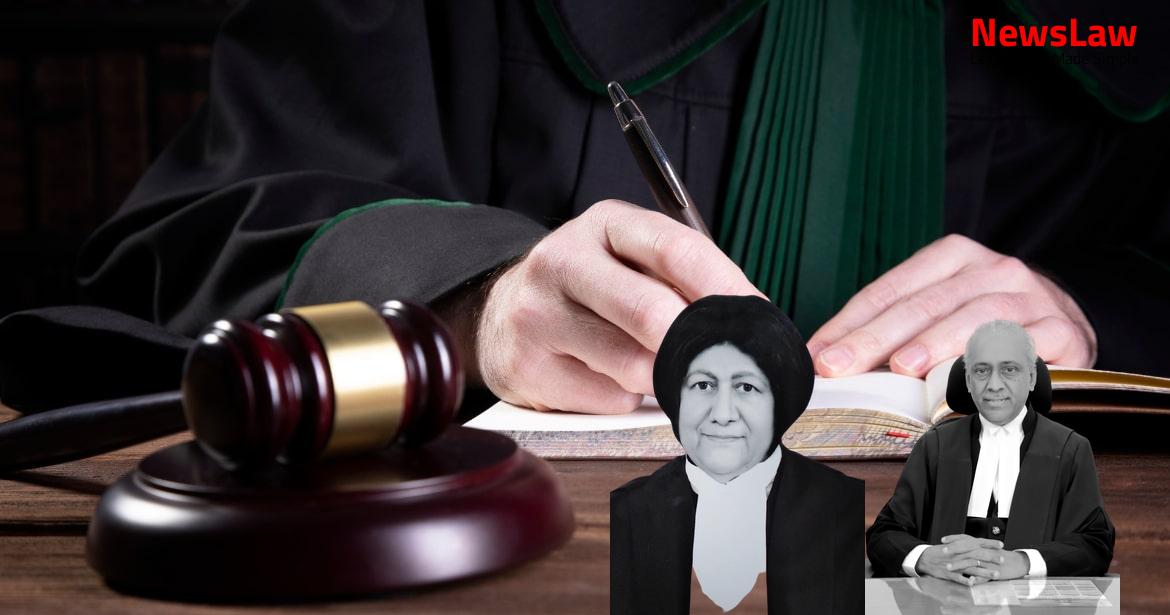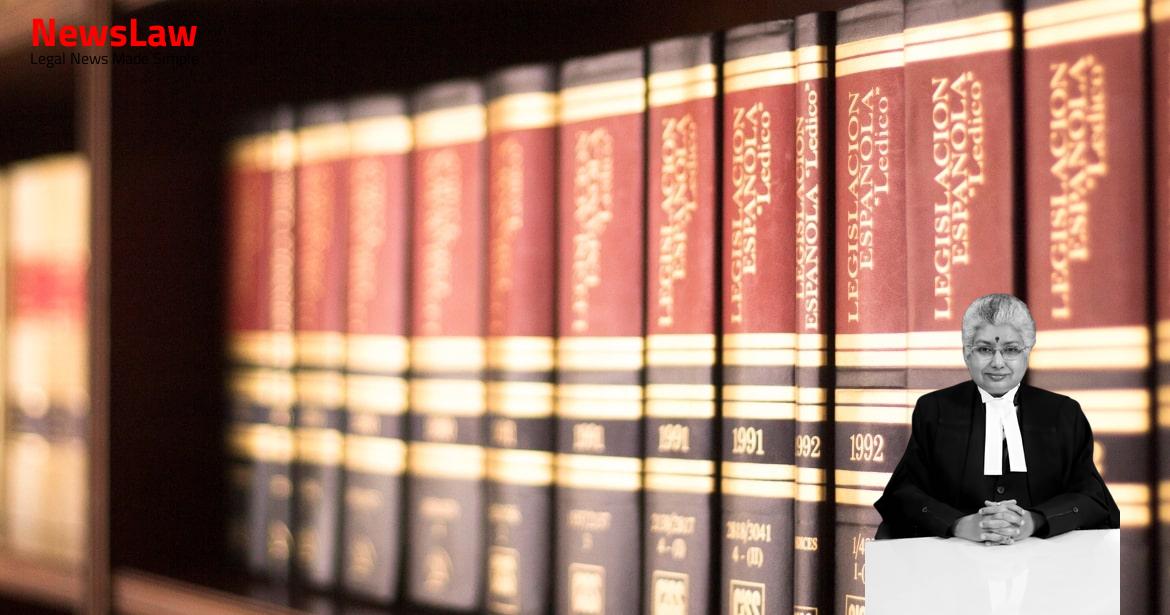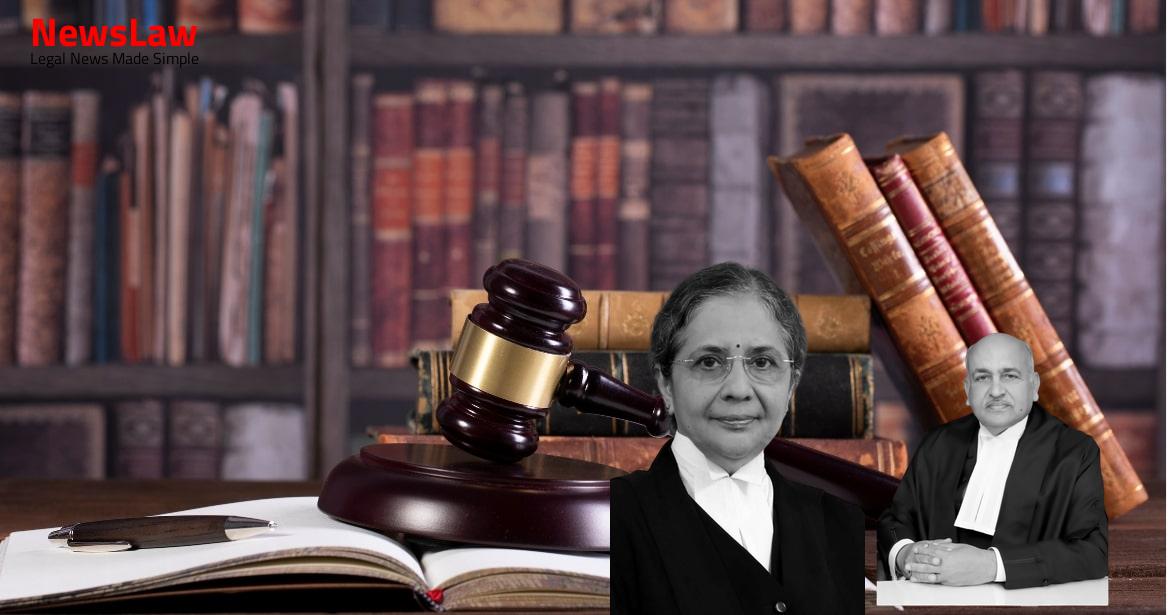Delve into the detailed legal analysis conducted by the court regarding building height regulations and fire safety in a recent case. The court’s examination of provisions such as the Unified Building Bye-laws and Fire Service Rules sheds light on the complexities of construction regulations. Stay tuned to understand the significance of compliance with these regulations for ensuring public safety and adherence to legal standards.
Facts
- Appellant applied for sanction of a Revised Building Plan, which has not been sanctioned.
- DDA was constituted by the Central Government in 1957 under the Delhi Development Act 1957.
- Delhi Development (Master Plan and Zonal Development Plan) Rules, 1959 were made by the Central Government.
- Amendment to the Master Plan for Delhi in September 2013 led to issues with fire clearance for the revised building plan.
- Appellant had to take a loan of Rs.20 Crores for construction and faced challenges due to height restrictions.
- High Court dismissed the Writ Petition filed by the Appellant against refusal of sanction for the revised plan.
- Appellant was allowed to apply for regularization of the construction by the SDMC.
- Amendment of Fire Service Rules in 2010 by the Lieutenant Governor impacted the building plan approval process.
- Appellant purchased premises in Defence Colony to build a residential building.
- Conflict arose after the Ministry of Urban Development amended the Master Plan in September 2013.
- Appellant faced challenges in obtaining fire clearance for the revised building plan following the Master Plan amendments.
- Efforts were made by the Appellant to amend Rule 27 of Fire Services Rules and align it with the Master Plan.
- Submission of the Revised Building Plan by the Appellant to the SDMC for height increase to 16.6 meters.
- Master Plan amendments and their impact on building height regulations were a central issue in the case.
Also Read: Interpretation of Corporate Guarantor under IBC
Arguments
- The controversy revolves around the height of the building, which is above 15 meters but within 17.5 meters with stilt parking.
- Buildings within 15 meters in height do not require fire service clearance.
- The Fire Service Authorities objected to the building plan based on the Gazette Notification stating maximum heights for buildings.
- The Notification mentioned 15 meters for plots without stilt parking and 17.5 meters for plots with stilt parking as the maximum permissible heights.
- Residential buildings up to 17.5 meters including stilt parking were clarified not to fall under the regulatory regime of the Delhi Fire Service.
Also Read: Judicial Promotion Dispute Resolved
Analysis
- The Delhi Fire Service Act 2007 was enacted to provide for maintenance of a fire service and enhance fire prevention and safety in certain buildings in Delhi.
- The Act defines ‘building’ to include various structures and ‘building bye-laws’ in sub-section (c) of Section 2.
- Chapter XVI of the Delhi Municipal Corporation Act, 1957 contains provisions for erection/ re-erection of buildings without specifying specific height requirements.
- Section 2(i) of the Fire Services Act defines ‘fire prevention and fire safety measures’ in accordance with building bye-laws/National Building Code of India.
- Special provisions for Fire Protection and Fire Safety Measures in certain buildings and premises in Delhi are outlined in Chapter VI of the Delhi Fire Services Act, specifically Sections 32 to 35.
- Section 53A of the DD Act restricts the making of Rules, Regulations, or Bye-laws by local authorities that contravene the Master Plan.
- The Government and Director have the authority to relax, modify, or annul fire prevention and safety requirements for certain building classes or special areas.
- The Director can also require additional fire prevention and safety measures for buildings or premises as deemed necessary.
- The Unified Building Laws of Delhi and the Master Plan provisions regarding height and use of buildings are applicable to the Building Regulations.
- Amendments to the Master Plan are automatically included in the Unified Building Regulations.
- Sanction cannot be rejected based on non-compliance with fire service requirements for high rise buildings.
- Decision on sanction must be taken within the stipulated time in the Unified Building Bye-laws.
- Different rules apply to high rise buildings compared to non-high rise buildings.
- Mandamus orders cannot be granted by the High Court to amend rules.
- Building height regulations vary based on factors including location and considerations of safety.
- Fire safety regulations for high rise buildings do not apply to residential buildings that are not high rise.
- The Delhi Fire Service Act does not have specific height prescriptions.
- Clearance from the Fire Service Department is required for high rise buildings only.
- The Building Bye-laws and Master Plan guide the construction regulations.
- Regulatory provisions for construction are in public interest.
- Compliance with safety requirements, including fire safety, is essential for all buildings.
- Height exceeding 15 meters qualifies as high rise if stilt parking is excluded.
- Building Plans must ensure compliance with the Delhi Fire Service Rules.
- Discretion for fire safety measures exists based on the specifics of each building.
- The importance of fire prevention and safety standards for multi-storeyed buildings.
- The Unified Building Bye-laws govern construction permitting procedures.
- Applying for fire safety clearance may still be open to the SDMC to ensure safety measures.
- Specification of buildings likely to cause fire risk in the Fire Service Rules.
- Building Bye-laws and National Building Code dictate fire prevention and safety standards.
- Clarification on the classification of buildings as high rise or non-high rise based on height and regulations.
- Differences between fire safety requirements for high rise and non-high rise buildings.
- The Master Plan and Building Bye-laws take precedence in case of inconsistencies with other laws.
- Fire Safety regulations apply with variations based on building height and occupancy.
- Building inspections for fire safety measures are crucial in high rise buildings.
- The significance of compliance with fire prevention and safety measures for all types of buildings.
- The relevance of the Unified Building Bye-laws in governing construction regulations.
- Fire Service Authorities must make a decision within 15 days
- Reasons for refusal must be provided
- Compliance with principles of natural justice is mandatory
Also Read: Ex post facto Environmental Clearance in Bio-Medical Waste Case
Decision
- The objections will not be raised solely on the ground of non-compliance of rules not applicable to a residential building that is not a high rise building.
- A decision will be promptly made on the application for sanction of the Revised Plan submitted on 14th January 2014, considering the provided observations and adhering to the timelines mentioned in Clause 2.3.1 of the Unified Building Bye-laws.
- The SDMC may choose to seek clearance from the Fire Service Authority, but such clearance shall not be denied based on non-compliance of requisites for high rise buildings or on the frivolous ground of unavailability of adequate size ladders for inspection.
- The SDMC may obtain the opinion of the Fire Service Authorities if necessary.
- The appeal is allowed in accordance with the points mentioned above.
- If no views are expressed within the specified time from the communication of this judgment and order, clearance will be assumed to have been granted.
- Any required intimations must be provided within 15 days, or the time specified in Chapter III of the Unified Building Bye-Laws, whichever is earlier.
Case Title: VIKAS SINGH Vs. GOVT. OF NCT OF DELHI (2022 INSC 824)
Case Number: C.A. No.-005244-005244 / 2022



